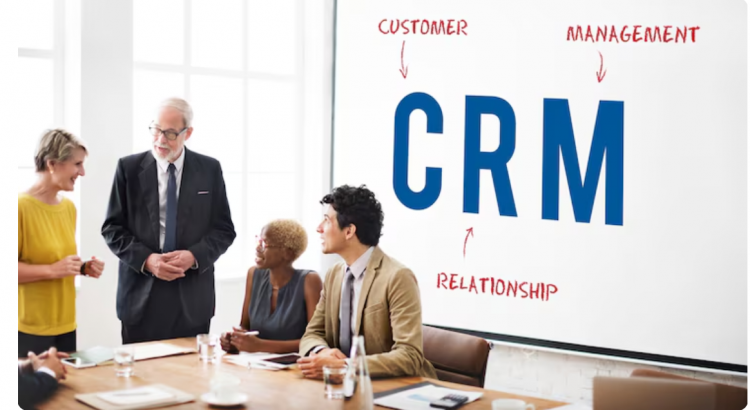In the last decade, Customer Relationship Management (CRM) has evolved from a simple contact database into one of the most vital engines of B2B growth. For many organizations, the CRM is no longer just a system of record; it is the nerve center of marketing, sales, and customer success. Yet, as the landscape shifts, businesses are beginning to realize that simply owning a CRM platform isn’t enough. It must be optimized, customized, and fully aligned with strategy to deliver measurable results.
This article explores why CRM integration and thoughtful strategy are essential for B2B organizations today, how platforms like HubSpot are reshaping the way businesses operate, and why forward-thinking companies are placing CRM at the heart of their operations.
CRM as the Central Hub of B2B Strategy
For B2B companies, the customer journey is complex. Deals often involve multiple stakeholders, long sales cycles, and carefully nurtured relationships. According to a 2024 report from Forbes, B2B buyers now expect a seamless digital experience comparable to consumer-level interactions. This expectation places new demands on businesses to connect the dots between marketing, sales, and service touchpoints.
A modern CRM acts as the central hub for this connectivity. It provides the data, automation, and reporting necessary to not only track interactions but also guide decision-making. Without a unified system, B2B organizations risk fragmented communication, missed opportunities, and inefficient processes.
Why HubSpot Is Leading the Way
There are many CRM options available, but HubSpot has carved out a strong reputation, particularly in the mid-market and B2B sector. With integrated Marketing, Sales, and Service Hubs, HubSpot empowers businesses to manage the entire customer lifecycle in one place.
Key reasons HubSpot is gaining traction:
- Ease of Use with Depth: HubSpot balances an intuitive interface with advanced customization for teams who need more than surface-level automation.
- Integration Capabilities: It integrates with thousands of tools, reducing the friction of managing multiple systems.
- Data and Analytics: Its built-in dashboards and reporting capabilities allow businesses to measure what truly matters—revenue attribution, lead conversion rates, and customer retention.
HubSpot itself notes that companies leveraging automation and reporting tools see significant efficiency gains, with some reporting up to 80% faster sales cycle times (HubSpot).
The Power of CRM Optimization
Simply “switching on” a CRM is rarely enough to achieve transformation. Optimization is where the value is unlocked. This involves configuring the CRM around a company’s key performance indicators (KPIs), setting up automation that reduces manual work, and building reporting structures that expose bottlenecks and opportunities.
For example:
- Lead Scoring can prioritize the most valuable prospects.
- Workflow Automation can eliminate repetitive tasks, freeing teams for higher-value activities.
- Customer Dashboards can highlight renewal risks before they become churn events.
In B2B, where efficiency and precision are paramount, these optimizations translate directly into stronger margins and more predictable growth.
Why Strategy and People Come First
It’s tempting to view CRM as a technology project. In reality, the most successful B2B implementations are strategy-first initiatives. Technology only enables outcomes when it is aligned with business goals. A CRM configured without consideration of a company’s growth strategy, KPIs, or sales methodology will underperform.
Equally important are the people using the system. If sales teams, marketers, and customer success managers are not trained and aligned, even the most advanced CRM can become underutilized. Studies show that CRM adoption rates directly influence ROI; organizations with widespread adoption see revenue impact nearly twice as high as those with limited adoption.
Lessons from Real-World B2B Use Cases
Consider a mid-sized IT services firm that wanted to reduce its reliance on manual reporting. By automating lead qualification and integrating CRM data into sales dashboards, the company cut administrative time by nearly 40% and doubled the number of pre-sales meetings scheduled each quarter.
In another case, a professional services company used CRM automation to streamline client onboarding. By standardizing workflows and automating follow-up communications, they improved retention rates by 20% while reducing average onboarding time by two weeks.
Both examples underscore a simple truth: the combination of CRM strategy, optimization, and integration is what drives results, not the software alone.
CRM in the Age of Data-Driven Growth
B2B organizations are increasingly competing on insights. The ability to leverage CRM data for predictive analytics, customer behavior tracking, and revenue forecasting is becoming a competitive differentiator.
Modern CRM systems empower leaders to answer questions like:
- Which marketing channels are driving the highest ROI?
- What sales activities most influence deal closure?
- Where in the customer journey do we lose the most prospects?
When these insights are tied back to decision-making, businesses can make smarter investments and maximize ROI.
The Role of CRM Partners
While technology is accessible, expertise is harder to come by. Many organizations turn to CRM specialists to ensure their systems are not only implemented correctly but also continuously optimized as strategies evolve. Partners like CRM Magnetics provide that bridge between platform capabilities and business outcomes. By aligning CRM strategy with real KPIs, businesses can unlock the full value of their investment and stay ahead in competitive markets.
Conclusion: A Strategic Imperative
CRM is no longer a “nice to have” system—it’s a strategic imperative for B2B success. As customer expectations rise and competition intensifies, businesses that master CRM optimization, integration, and adoption will enjoy a measurable advantage. Platforms like HubSpot are making these capabilities more accessible, but true impact comes when CRM is treated not as software, but as the backbone of business growth.
B2B leaders who embrace this shift will find themselves better equipped to streamline operations, increase conversions, and build lasting customer relationships in the years ahead.








